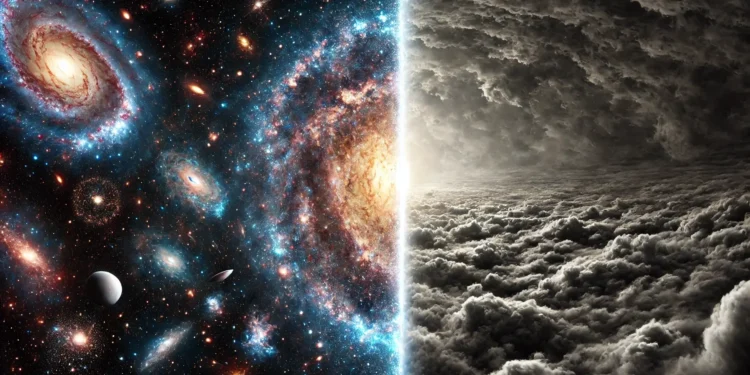For decades, physicists have speculated about a terrifying possibility for the universe’s future—one where everything we know could suddenly and violently vanish in an instant. This cataclysmic fate, known as false vacuum decay, is now more than just theoretical speculation. In a groundbreaking experiment, scientists have used a cutting-edge quantum computer to simulate this chilling process for the first time.
A team led by researchers from the University of Texas at Austin has successfully used a 5,564-qubit quantum annealer to model the decay of a false vacuum—a process that could, in principle, one day obliterate the universe as we know it. The findings, published in Nature Physics, offer a new glimpse into the fundamental nature of our reality and demonstrate the growing power of quantum computing in solving some of the most complex problems in physics.
A Universe on the Edge of Stability
At the heart of this research lies a peculiar and unsettling idea: the vacuum of space may not be truly stable. According to quantum field theory, space is filled with various energy fields, one of the most important being the Higgs field, which gives particles mass. If the Higgs field is not in its lowest energy state (true vacuum) but instead trapped in a false vacuum, it could theoretically decay at any moment.
This decay would begin with the spontaneous formation of a “bubble” of true vacuum somewhere in the universe. The bubble would then expand at nearly the speed of light, fundamentally altering the laws of physics inside it and annihilating everything in its path—including entire galaxies. The terrifying part? If this process were to begin, we wouldn’t see it coming.
While this sounds like the stuff of science fiction, physicists take this possibility seriously. However, because vacuum decay is a deeply quantum mechanical process, simulating it has remained a daunting challenge—until now.
How Scientists Simulated the Universe’s Doom
Quantum computers have long been hailed as the future of computing, capable of solving problems beyond the reach of even the most powerful classical supercomputers. One of these quantum devices, a D-Wave quantum annealer, was used to simulate the physics of vacuum decay in one dimension.
Unlike classical bits, which can exist in only two states (0 or 1), qubits exploit the bizarre properties of quantum mechanics to exist in superpositions of both states simultaneously. This enables quantum computers to process vast amounts of information in parallel, making them ideal for studying complex quantum phenomena like false vacuum decay.
The researchers programmed the quantum annealer to represent a simplified universe where a metastable false vacuum could decay into a more stable state. By manipulating the qubits, they simulated the spontaneous formation of bubbles of true vacuum and observed how they interacted and grew.
What They Found
The experiment revealed an intricate “bubble dance” unfolding within the simulated quantum system. When bubbles of true vacuum formed, they behaved in unexpected ways—merging, growing, and influencing each other in complex patterns. This behavior closely mirrors theoretical predictions of how vacuum decay might unfold in the real universe.
What This Means for the Future
While there is no immediate reason to panic—current estimates suggest the Higgs field is likely stable for trillions of years—this study has significant implications for both cosmology and quantum computing.
For cosmologists, it provides a practical way to test ideas about vacuum stability, phase transitions in the early universe, and even the fundamental nature of space itself. If scientists can scale these simulations to higher dimensions, we may gain an unprecedented understanding of how cosmic events unfold.
For quantum computing, the success of this experiment highlights just how powerful these machines have become. Quantum devices are not yet ready to replace classical computers, but they are proving themselves invaluable in tackling problems that traditional computing simply cannot handle.
The researchers now plan to push their work further, attempting to simulate false vacuum decay in two dimensions, a far more complex scenario. If successful, this could bring us one step closer to fully modeling one of the most mind-boggling processes in the universe.
Until then, the possibility of our universe being a mere bubble away from destruction remains one of the strangest and most haunting ideas in modern physics.











